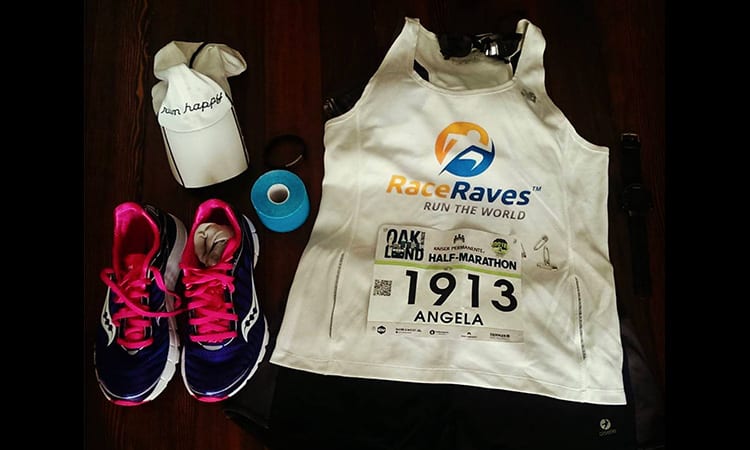
Any runner who’s toed a start line knows: like it or not, every race is a learning experience. We’ve certainly made our share of mistakes in the 100+ races we’ve run, and while some were clearly our own fault, others were beyond our control. And a surprising number occurred before the race even started. So with races returning, and in the hopes that our practice makes you perfect, here we share our favorite battle-tested tips and tricks, with key insights from RaceRaves members, to improve your race day experience and help you avoid common mistakes. On your mark, get set, GO!
11 Race Day Tips
Tip #1: Trust your training
As obvious as this may seem, it’s the sun around which all other advice revolves. As a runner, you’re only as good as your training. And the better your training, the more prepared you’ll be when the going gets tough. Or as former NFL quarterback Peyton Manning so eloquently put it, “Pressure is something you feel when you don’t know what the hell you’re doing.” Come race day, your training will determine whether you bow to the pressure or rise to the occasion.
At longer distances such as the half or full marathon, there’s no such thing as beginner’s luck. Train for the distance, and you’ll reach the start line knowing that when—not if—you hit a rough patch or two during the race, you’ll own the moment and have both the physical and mental fortitude to push through it. On the other hand, if you’ve cut corners or fallen short in your preparation, don’t expect to suddenly rise up and channel your inner Shalane. Trust us, it’s a whole lot better to suffer privately in training than publicly on race day!
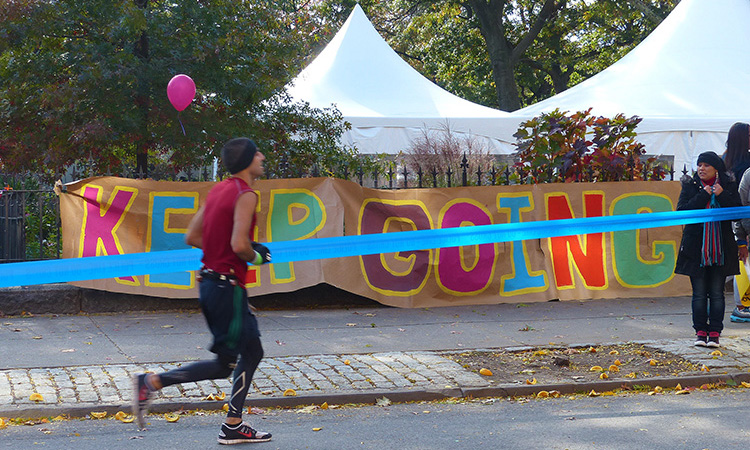
Tip #2: Nothing new, on or in you
For seasoned runners, this falls under the heading of “common sense,” which is ironic given that most of us learned it the hard way. From shorts to shoes to nutrition, race day is an ill-advised time to test out that new piece of gear (chafing, anyone?) or make tweaks to your diet—even if you did get a sweet deal at the pre-race expo.
There are enough variables you can’t control on race day (weather, wildlife and rogue railroads come to mind), so you’ll want to carefully dial in those you can. You don’t want an otherwise magical day spoiled by an easily preventable blister.
Training runs are not only great for getting in race shape, they’re also the perfect time to break in new gear and fine-tune your nutrition. Even training with the same brand of sports drink or gel you’ll encounter on race day can help ease your mind. And a relaxed mind means an easier race (see #9 below).
Tip #3: Have a plan and stick to it
Stop us if this sounds familiar—you’re standing at the start line feeling good, your mind formulating a vague pacing plan that goes something like “I’ll just start running and see how I feel”. True, it’s important to listen to your body, and a “play it by ear” strategy will suffice if your only goal is to reach the finish.
In most cases, however, you’ll not only feel fine at the start line—thanks to the emboldening power of adrenaline, you’ll feel great. Like, Usain-Bolt-on-100m-final-night great. And without a well-defined pacing plan, you’ll likely fly out of the chute all smiles en route to a very fast first mile. Which is well and good if you’re running a one-mile race. Otherwise, a fast first mile will come back to haunt you later, once that initial adrenaline wears off and fatigue inevitably sets in.
“Stick to your plan,” urges Colorado-based runner @Otter. “Don’t change your mind at the starting line just because conditions are ‘perfect’ or because you feel ‘extra fast’ today!”
“Try to plan your first mile as the slowest mile,” recommends 35-time marathoner @dansolera. “This gives you time to warm up, get your head in the right place and save your energy for the tougher miles.” Sub-two-hour half marathoner @Jen_L agrees, adding, “There’s nothing worse than walking during the second half of a race, knowing that you went out too quickly.”
So unless your goal is to keep your body guessing and hit the wall before your fellow runners, do yourself a huge favor and plan your pacing—at least for the first few miles, before your training takes over and your body settles into its natural rhythm. As the miles add up, you’ll be glad you did.
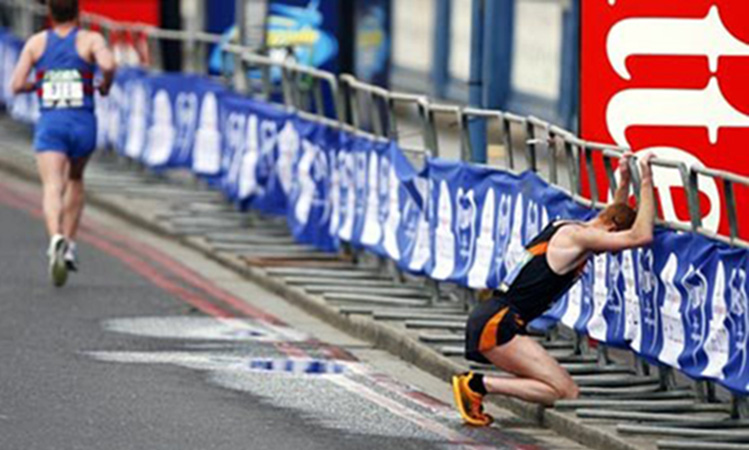
Tip #4: Don’t trust other runners (or spectators)
More to the point, don’t trust other runners’ pacing. Just because you lined up near the 8:00/mile pace group doesn’t mean you should trust anyone other than the pacer to stick to that pace. This is particularly true at the start of a race, when everyone is high on adrenaline and quite certain that today is their day (see #2 above).
Even pacers should be viewed initially with a skeptical eye, unless you happen to know and trust their personal pacing strategy. As three-time Boston Marathon finisher @Lani smartly notes, “But you can’t always trust pacers, either. Their primary goal is to finish at their stated finish time, but some pacers like to go out way too fast so they can front-load and ‘bank’ extra time to serve as a cushion” later in the race, once the pace slows.
You’ll likely pass and be passed by many runners over the course of a 10K or longer distance, so don’t hitch your wagon to the wrong horse—e.g. an undertrained, overexuberant runner with a poor sense of pacing—and end up ruining your day. Stay within yourself and “run your own race,” advises race veteran @slomojohn.
Be wary, too, of well-meaning spectators—and not just those clamoring “Almost there!” at mile 2. During many big road races, raucous supporters line the streets, creating a wall of noise that motivates exhausted runners onward. Sometimes, however, the road to an early bonk is paved with good intentions. During the New York City Marathon, for example, at the transition from the Queensboro Bridge to Manhattan, an energizing burst of spectator support causes runners to accelerate by nearly 5% on average in this mile (source: New York Road Runners). For an 8:00 mile, 5% equates to 24 seconds—probably not your best strategy in mile 17 of a marathon, and an oops many runners regret long before they reach Central Park. So nod, wave or smile at the sidelines, but remember—energy saved is energy earned.
Tip #5: Get your sleep
Unless you’re running a 100-mile ultramarathon, we wouldn’t recommend sleeping during a race. But the sleep you get during training and tapering will go a long way toward determining whether you rise and shine on race day. Unlike nutrition or training, where there are many roads to race day success, there’s no substitute for sleep—no scientifically proven shortcut, no alternative path to mental and physical recovery. Critical physiological processes are activated only during REM sleep, and plenty of scientific studies attest to its importance.
Elite runners know this to be true, with many of them logging ten hours of sleep per night plus one or more naps during the day. Two-time half marathon world record holder Florence Kiplagat of Kenya insists on 16 hours of sleep per night. That’s more than some new parents get in a week!
If, like many busy runners, you shrug off experts’ recommendations of 9 hours of sleep per night as an impossibility, then at least be smart enough to recognize the truth—that your refusal/inability to allow yourself adequate rest and recovery won’t change the fact that your body absolutely needs it to perform its best. Sure, thanks to adrenaline and muscle memory you may be able to get away with an abbreviated night’s sleep before a race, but only if you’ve slept well in the days leading up to the event. And as IRONMAN® triathlete @jimmynam points out, “If you manage to get a great sleep the night before the race—bonus!”
For an excellent primer on the importance of sleep for athletes, we recommend Sleep to Win!: Secrets to Unlocking your Athletic Excellence in Every Sport, by Dr. James Mass and Haley Davis.
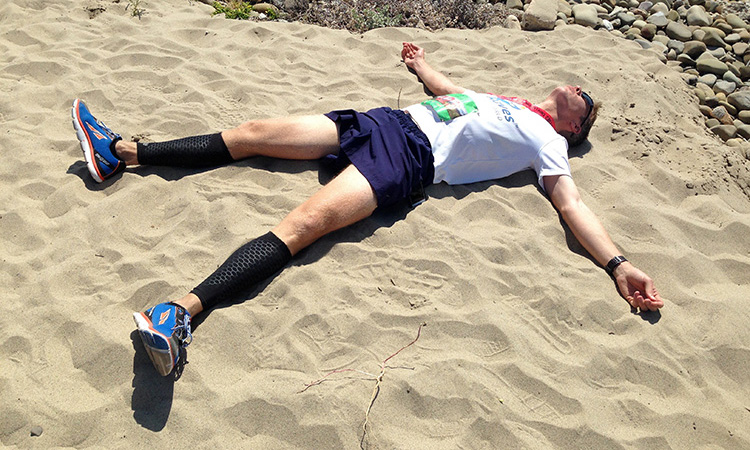
Tip #6: Study the course map
For many runners this is a no-brainer—of course you want to know the route you’ll be running before you run it. But this advice extends beyond conspicuous hills, since it’s often not the size but the placement of the hills that exacts the greatest toll on tired legs. Examine the course elevation profile to recognize hills not only by how steep or how high they are, but by where they fall along the course. Despite being overshadowed by one monster ascent in mile 8, several short but steep rollers in mile 12 could wreak havoc on both your pacing and mindset, particularly if you’re not expecting them.
Identify not only major climbs along the course, but key descents as well. Downhill running, while generally faster, punishes the legs more than uphill running, and hammering a downhill early in the race could cause your quads to betray you later. The Boston Marathon course, for instance, is notorious for its initial descent out of Hopkinton, which results in many first-time participants burning out by the time they reach the Newton Hills in mile 16. Shifting gears from uphill to downhill running (and vice versa) also expends significant energy, particularly in trail races where unrelenting hills can be a fact of life.
“Train for the terrain, on the actual course if you can,” suggests Bay Area runner @PeteSinCA.
Finally, study the course map to identify possible points of confusion, for example, nodes where different streams of runners (e.g. marathoners and half marathoners) diverge, or anywhere the potential exists for a wrong turn. Adding extra distance to your race is a surefire way to spoil the experience, and we’ve yet to find a race that awards its finishers a bigger medal for running a 14-mile vs. 13.1-mile half marathon.
Tip #7: Skip the front of the aid station
This recommendation is specific to larger road races such as the Abbott World Marathon Majors (Berlin, Boston, Chicago, London, New York and Tokyo) and other big city races.
Many of these events have sprawling aid stations made up of several tables on one or both sides of the street. And for most runners, their immediate instinct is to pull into the first aid station they see on their right. (Did you know? 90% of consumers unconsciously turn right on entering a store.)
Don’t do it! Familiarize yourself with the course layout ahead of time and, if possible, resist the temptation to follow the crowd, which inevitably slows to a walk and creates a traffic jam at the front of each aid station. Rather, bypass the first few outstretched paper cups in favor of those less-visited volunteers down the line or on the opposite side of the street—they’ll appreciate the company. Just be careful in your choice of cup, since many aid stations feature water in one place and sports drink in another.
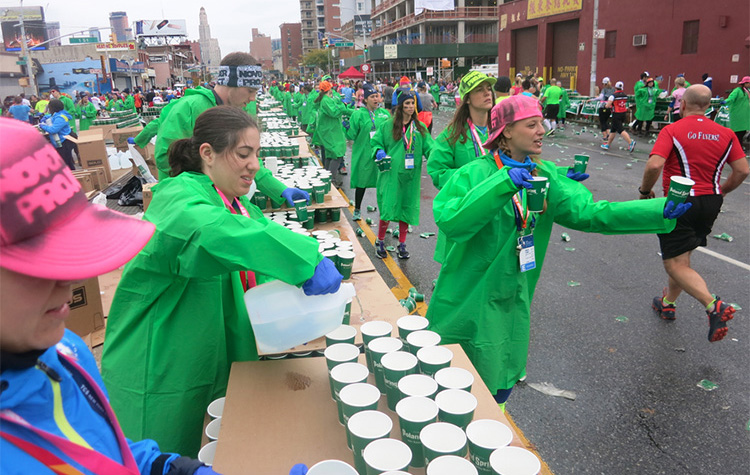
Tip #8: Focus on your breathing
Some runners rely on motivational mantras in the later stages of a race, when fatigue mounts and their form starts to deteriorate. We prefer instead to focus on our breathing.
As a runner, poor breathing techniques can put you at an immediate disadvantage. For instance, if you always inhale as you step with the left foot and exhale as you step with the right, then with each breath you’re effectively lifting your body on the left side and dropping it on the right. This, in turn, subjects the right side of your body to greater impact forces, rather than distributing these forces equally. Do this for long enough, and over time you’re likely to suffer from imbalance injuries.
By contrast, a regular pattern of inhaling for 3 steps and exhaling for 2 (or 4) steps—preferably practiced and incorporated during training—restores a sense of rhythm and balance that tend to go missing late in a race. This 3/2 (or 3/4) breathing pattern also serves to reduce biomechanical stress by alternating your stepping and landing foot with each breath. And when you’re mentally & physically focused on maintaining an “in for 3, out for 2” breathing cadence, you become more attuned to your body’s feedback and less aware of fatigue. After all, a tired mind makes a poor multitasker.
Tip #9: When the going gets tough, smile!
Conventional wisdom tells us smiling uses fewer facial muscles than frowning. But you wouldn’t know it from watching runners late in a race, where frowns—if not outright scowls—predominate.
The problem with frowning stems from a concept scientists call perception of effort, which is basically a euphemism for “level of suffering.” According to Samuele Marcora, Director of Research at the University of Kent School of Sport & Exercise Sciences, most of us stop running not when we experience muscle fatigue, but when we feel we’ve suffered enough. In other words, it’s the mental perception of our effort, rather than the effort itself, that induces us to quit before our physical well runs dry.
What is more, studies suggest that negative thoughts and facial grimaces increase perception of effort, leading to a greater feeling of fatigue than a positive mindset and relaxed countenance. As Matt Fitzgerald writes in his book How Bad Do You Want It?: Mastering the Psychology of Mind over Muscle:
Crudely put, an athlete can have either a good attitude or a bad attitude about any given level of discomfort. If she has a good attitude, she will be less bothered by the feeling and will likely push harder.
So listen to Mom and turn that frown upside down! Spectators and volunteers will respond in kind. And as @sfgal78 points out, with photographers stationed along the course smiling also means “you’ll be much happier when you see your race day photos later.”
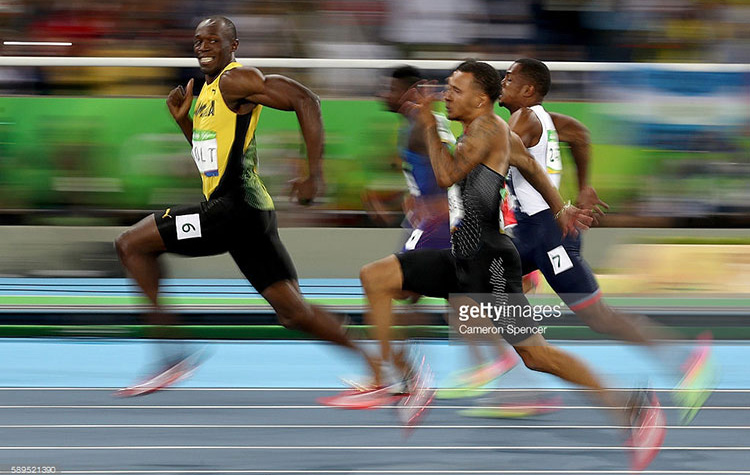
Tip #10: Find someone to shadow
If no official pacer is available, finding a “rabbit” to shadow later in the race can help carry you to the finish. Identifying another runner to focus on—someone who is moving at the pace you want to be moving at—provides a surge of motivation while helping to take your mind off your own fatigue. And if your target happens to either drop back or pull away, simply transfer your focus to another, like a frog hopping from one lily pad to the next.
Likewise, this strategy comes in handy in a headwind—for example during the 2016 Big Sur International Marathon, where gusts on Hurricane Point reached speeds of 40 mph. In conditions like Big Sur, find someone (or better yet, a group of someones) who is running a pace similar to yours, and tuck in behind them to block the wind. As a taller runner I’ve had others draft off me, and I don’t blame them a bit—in fact, I’m always happy to help another runner reach the finish line faster. On race day we’re all in it together!
Tip #11: Channel Your inner Olympian
Watch the finish line at many road races, and you’ll notice finishers who look too exhausted, too preoccupied or simply too cool to appreciate their achievement—they cross the line, glance down at their GPS and absentmindedly accept the medal handed to them by a friendly volunteer. In doing so, they pass up a key opportunity.
Insignificant though the gesture may seem, channel your inner Olympian by letting the friendly volunteer hang the medal over your neck (feel free to imagine your country’s national anthem playing in the background). After all, how often do any of us get to feel like an Olympic medalist? This is a fun way to celebrate your accomplishment while at the same time thanking a volunteer for letting you sweat on them. And though this small ceremony will do nothing to improve your finish time, it may just help you savor your success. Considering all the hard work you put into training for that moment, you deserve it!
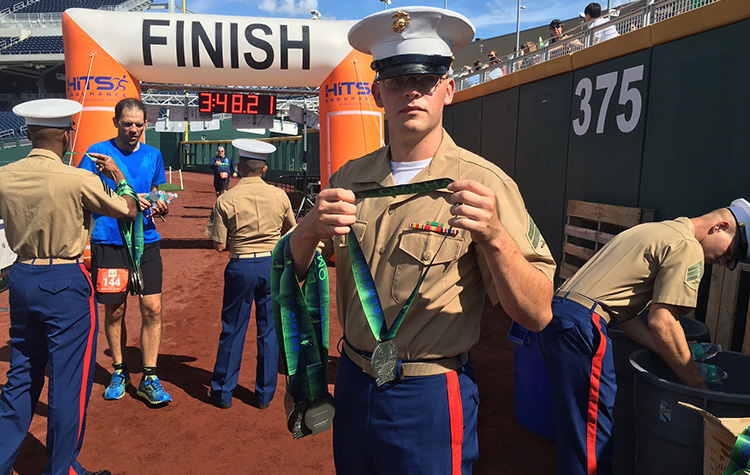
Lightning Round: Race Day Tips from RaceRaves Members
Bonus tip #1: Pay attention to logistics
- “Arrive at the race site early to avoid the stress of looking for parking, bathrooms, start line, etc.” – Ellen L.
- “Make a checklist for packing, wear less clothes than you think you should and arrive early.” – Angela K.
- “On race day, DEFINITELY take your own roll of toilet paper from the hotel!” (Editor’s note: this is especially true for trail races, and not a lesson you want to learn the hard way.) – Susan K.
- “Even if you don’t have to go [before the race], line up for the portapotties anyway.” – Eva M.
- “Pack yourself a special treat for the finish line—knowing that there’s some treat you LOVE waiting for you at the end of the race can help you get through those last few miles. Or maybe you really enjoy dry bagels and (one) complimentary Michelob Ultra, in which case you can ignore this suggestion.” – Daniel O.
Bonus tip #2: Stay positive and enjoy the day
- “I think people spend too much time focusing on the desired outcome. I’d tell them to enjoy the race/event. Have fun & race HAPPY. I mean seriously, you paid for this, now enjoy it!” – Amanda C.
- “Have fun on race day. I used to run for speed/time; I don’t do that any more. Now the race days are easier and the memories with friends are better.” – Wally H.
- “Always set one unquantifiable goal, such as enjoying your day or finishing strong.” – Jen L.
Agree? Disagree? Got your own tried-and-true race day tips and advice? Let us know in the Comments below!
(Updated July 19, 2021; originally published in two parts on Aug 23 & Sept 22, 2016.)
Looking for more running events? Search for races by state/city or month, and try our handy Find a Race tool to search for events by name, date range, distance, location, terrain & more. Then sign up for a free account to build your wish list and start coloring in your 50 States Map!
Author: Mike Sohaskey
Mike Sohaskey is the co-founder of RaceRaves, the premier online reviews community for runners to share their race experiences and find their next challenge. Mike honed his creative and critical thinking skills as a research scientist, earning a Ph.D. in Cancer Biology from Stanford. He’s also completed over 100 races — including 50+ marathons and ultras — in locations ranging from Antarctica to Zimbabwe.
Other RaceRaves articles you’ll enjoy (trust us!):
Lunatic Spotlight: 50 States the Hard(er) Way
November Featured Races that may actually happen
Toughest Road Marathons in North America
Running on all seven continents
Unconventional Races that dare to be different
And for more helpful articles, check out our blog!
Find this article informative? Please share it, and let others know RaceRaves is the premier online resource to DISCOVER, REVIEW & TRACK all their races and to CONNECT with other runners!
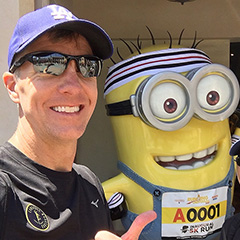
No comments yet